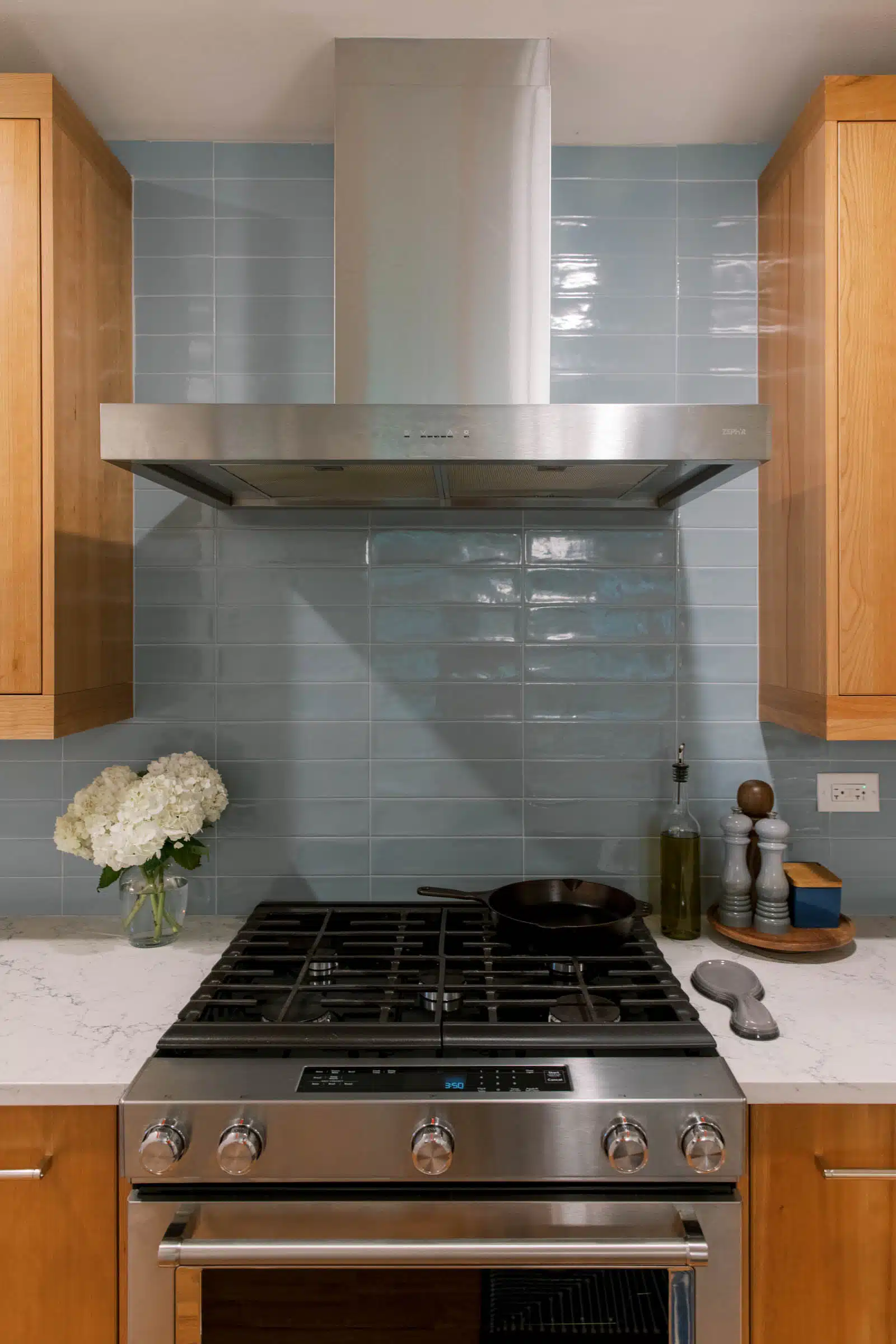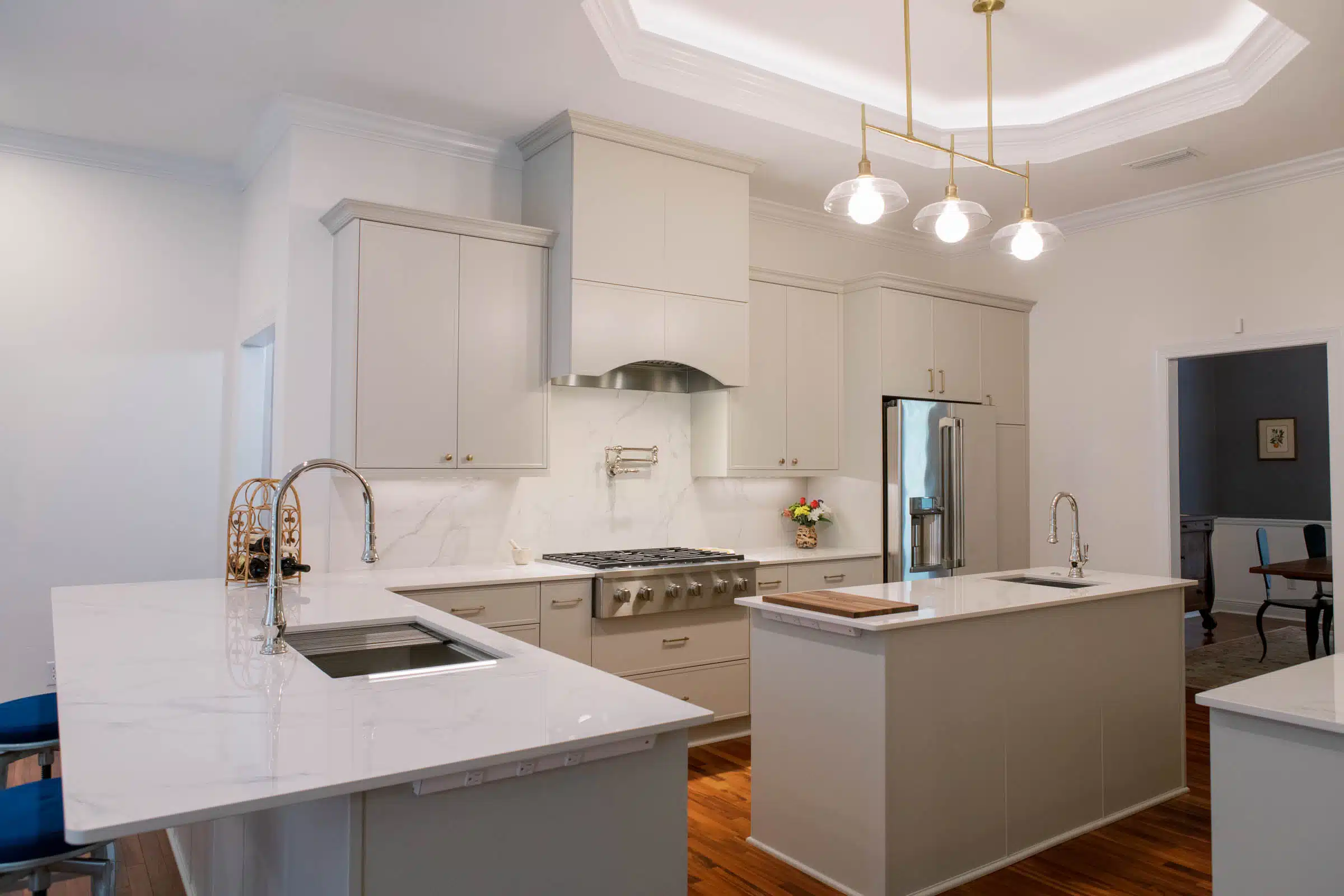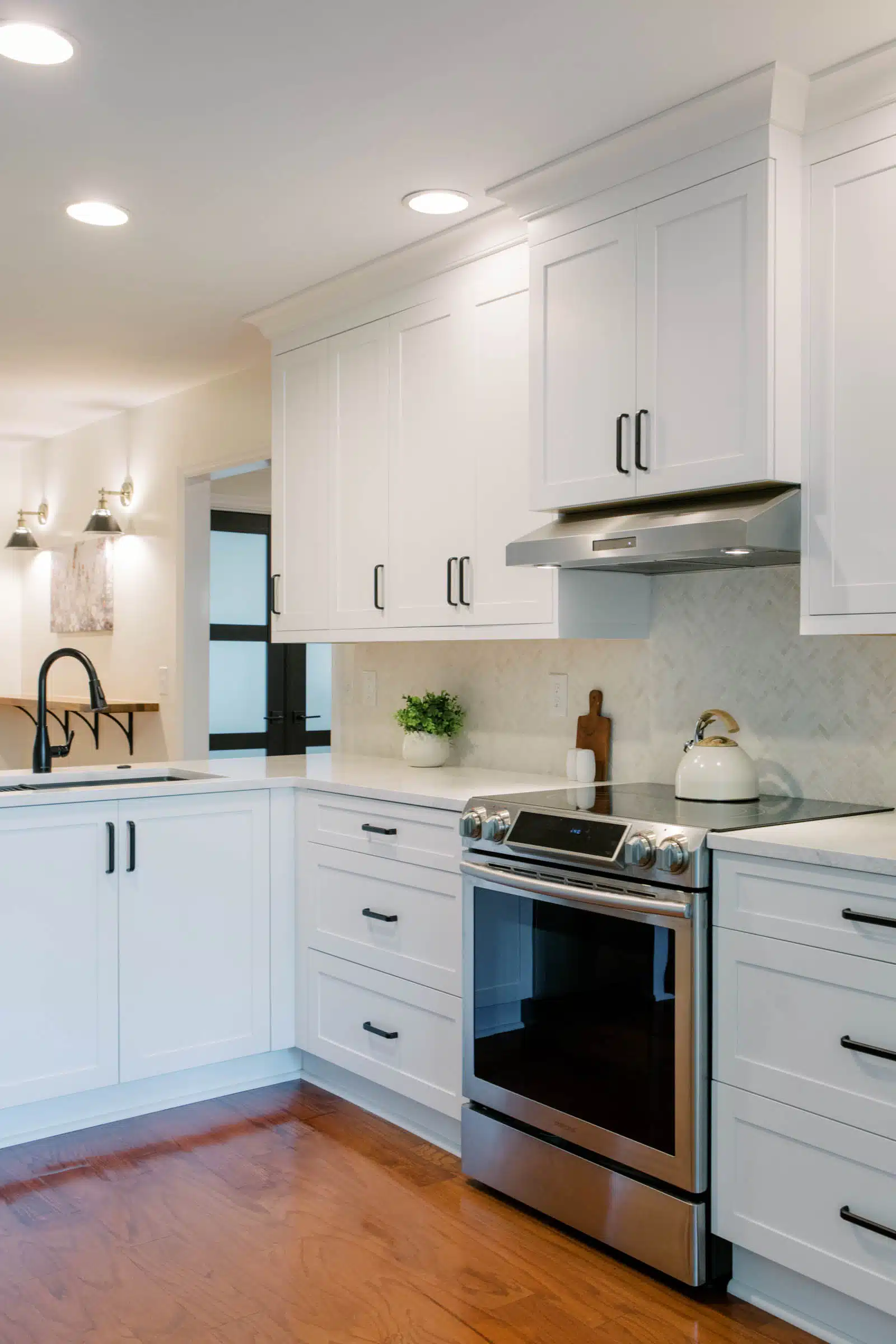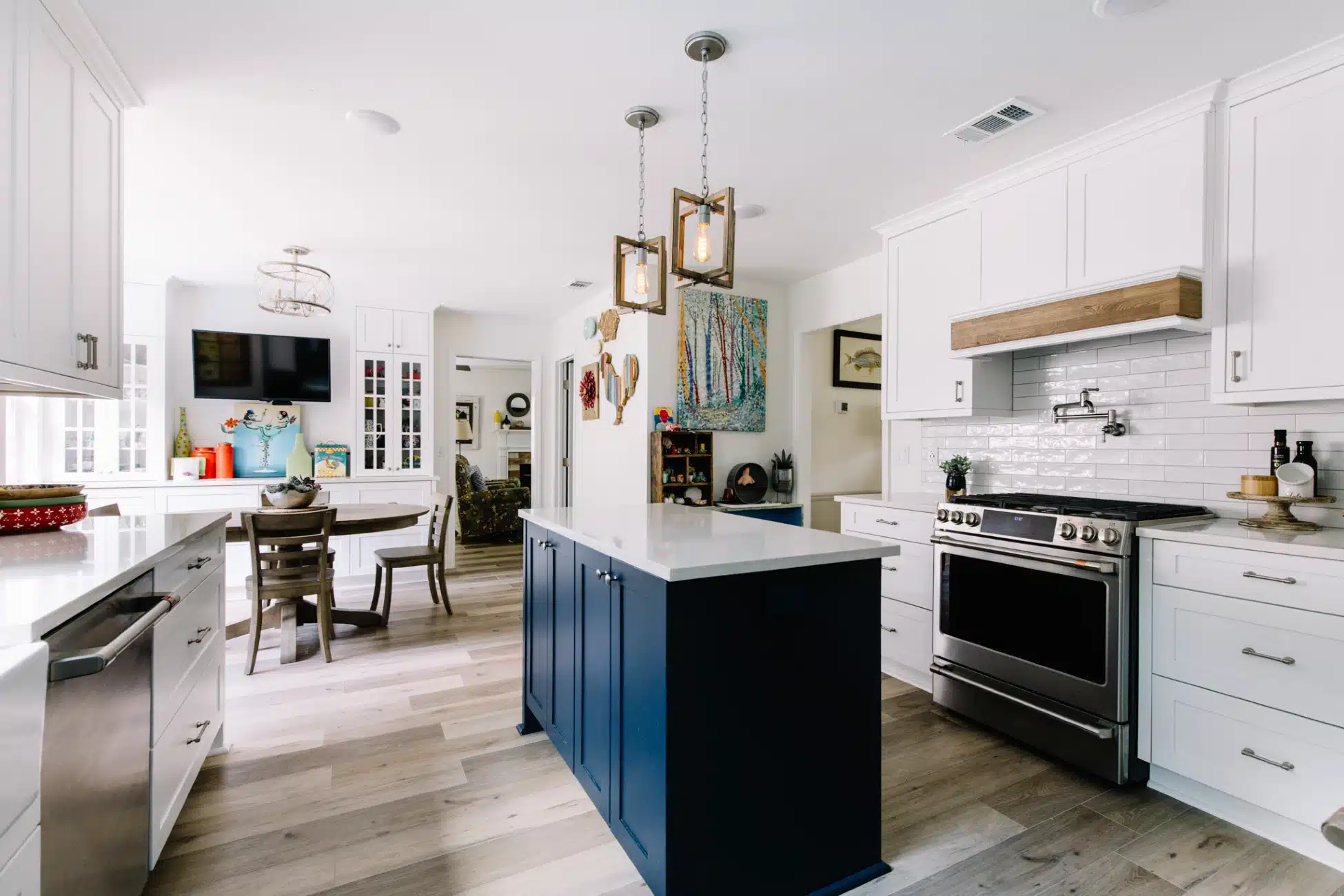How the Right Kitchen Range Hood Can Revolutionize Your Cooking Experience
Cooking truly engages all your senses, from the sizzle of meat in the pan to the smell of cookies in the oven. And the satisfaction that comes from feeding the people you care about is unmatched. But sometimes those odors can linger longer than you like.
One of the most important but often overlooked elements in your kitchen is your range hood. You may not even notice it if it’s working properly. But if it isn’t adequate for the job, it can ruin your cooking experience by leaving your kitchen full of unwanted smells, grease, and even unhealthy gases.
Is your range hood right for you? Read on for answers.

Kitchen Range hoods come in a lot of materials and styles but for pure function its hard to beat a stainless steel hood.
McManus Kitchen and Bath is a full service remodeling company with an in-house design team and showroom right here in Tallahassee, FL.
We work exclusively with homeowners to help them remodel using a design-build approach that saves time, avoids confusion and creates better results.
Why Are Range Hoods Important?
There’s so much more to range hoods than meets the eye. Range hoods perform a variety of functions in your kitchen. They are necessary whether you have a gas, electric, or induction range, although they are far more critical if your range is powered by gas. A side effect of homes becoming more energy efficient is that they’re much more airtight–meaning that harmful gases can’t escape. As a result, indoor air has become much more polluted than outdoor air in many structures, according to EPA studies.
Gas ranges can fill the air with carbon monoxide, carbon dioxide, nitrous oxide, formaldehyde, and tiny bits of food and grease particles. While electric and induction ranges don’t release all those gases into the air, cooking with them does lead to grease, smoke, and food particles in the kitchen air that should be ventilated.
Range hoods keep your kitchen
- clean, leading to less greasy build-up on your backsplash, cabinets, and other appliances.
- safe, as the air is cleaner and less contaminated with harmful gases.
- Fresh, because the stale or smelly air inside is replaced with clean air.
- cool, since range hoods move heated air out and allow cooler air in. This is especially important in warmer climates like sunny Tallahassee!

Wood hoods like this one can match or contrast you cabinetry. They have metal inserts that include the blower and lighing.
Want Some Inspiration In Your Inbox?
Range Hood Aesthetics Matter
Range hoods come in so many different looks that you’re sure to find one that is perfect for you. You can feature your range hood as a focal point in your kitchen or have it blend in. You can choose stainless steel, white, mixed colors like black and gold, or a complementary color. Range hoods can be tiled to match your backsplash or framed in wood for a farmhouse look. You can leave the design simple and add trim at the bottom for a little detail. You can even cover the range in marble to match your countertops or island. The sky is the limit.
Range Hood Performance
There are many aspects of a perfect range hood to consider besides the aesthetic. Read on for help in understanding what makes for a great ventilation system in your kitchen.
Here are some things to Consider:
CFMs (Cubic Feet Per Minute)
CFM measures how many cubic feet per minute of air is removed from your kitchen–and generally, the higher the better. For many in-home ranges, 400-600 CFMs is enough, but for bigger ranges and professional ranges, like 36-48” models, you will want 900-1,500 CFMs. Professional range hoods run at about 1,000-1,500 CFMs, which means that the air in a small room is being changed every minute. While you may not need something quite that powerful, you definitely want the air changed every four minutes.
Keep in mind that a higher CFM will lead to a louder range hood. When you buy a hood or a blower (more on that later), pay attention to the sones rating as well. Sones are measurements of sound–the lower the sone, the quieter the motor. Most ranges operate between about 6 to 10 sones. Better hoods come with remote blowers that are mounted in the attic or outside instead of at the range so they are much quieter.
Your range manufacturer will specify the size and CFM that is right for the range you choose. But also take into account the size of the kitchen and range, whether your kitchen is part of an open floor plan or is more closed, how long the ventilation ducts are, how many bends the ducts have, and whether you have an external vent cap. A contractor can help you figure out your ideal amount of CFMs.
Ductwork
For your range hood to properly ventilate your kitchen, you need your ductwork to be in good working order. The best-case scenario would be the ducts extending either straight up to the roof or straight back through an exterior wall. But often, you’ll need a longer duct run that includes bends, or elbows. It’s best to make the run as short as possible and include as few elbows as possible. Use the widest ductwork you can, and make sure it’s stainless steel so it doesn’t collect grease and grime.
Capture Area (Range Hood Depth and Width)
Capture area refers to the height, width, and depth of the hood. The bigger the capture area, the more air, smoke, steam, grease, and gases the hood can remove. It’s especially important to have sufficient capture area over the front burners, where most of the cooking generally happens. Plan for a 24-inch capture area if you cook a lot. The lack of a large capture area is one of the problems with smaller range hoods and downdrafts.
Distance From the Range
How far above the range should the hood be? That depends on what type of range you have.
- For an electric range, the hood should be between 20-24 inches above the range.
- For a gas range, the hood should be between 24-30 inches above the range.
- For an induction cooktop, the hood should be between 30-36 inches above the range.
Your range hood specs will tell you how high you can mount your hood. Building code default to manufacturer specifications for kitchen ventillation.
Makeup Air and Backdrafting
It’s important to have fresh air brought back into the kitchen via your HVAC system when you’re pulling air out with the range hood. Especially in a closed-in kitchen, if you don’t replace the air that is being removed, it will be pulled from somewhere else, like the attic or garage. This means you’re not filling your kitchen with fresh, clean air. This is called backdrafting. But there’s a simple solution: install what is called a ‘make up air’ vent to bring fresh air back into the room to make up for what the range hood is removing.

Undercabinet range hoods are simple and inexpensive.
What Types of Range Hoods Can I Use in My Tallahassee Kitchen?
There are several options available, with pros and cons for each type. Think about the size and layout of your kitchen and how often you use your range when deciding what type is best for you. Some options include:
- Over-the-range microwaves. Great as space-savers, these appliances are convenient as all your cooking appliances are together. The capture area is not great though, because the microwave doesn’t reach over the front burners. The average CFMs for over-the-range microwaves are low, as well, with an average of 350 CFMs.
- Ceiling blowers. These ventilation systems look more like the exhaust fan in your bathroom. On the plus side, they don’t take up any visual space, so they keep your kitchen looking clean and streamlined. The problem comes in when they’re placed on high ceilings–they can’t pull the air in well enough to properly ventilate, and their capture area isn’t great.
- Downdrafts are often used in islands. They have an exhaust fan that telescopes up from a vent in the island or counter next to the range when needed. The fan lowers into the countertop when not in use. They remove the need for a range hood reaching down from the ceiling. On the downside, they almost always need a long ductwork run with at least one elbow. Downdrafts also don’t usually have a high CFM rating or a large capture area.
- Under cabinet range hoods sit flush with the bottom of your cabinets. They’re easy to install and their slim design means they aren’t very noticeable. Make sure you choose one with a high CFM rating as this type can have a lot of variation in strength.
- Ventless hoods are sometimes used on interior walls where there isn’t a way to ventilate to the outside, such as in apartments or other homes with shared walls. These are a little different–they capture grease and food particles in filters, clean the air, and recirculate it. Unfortunately, some of the harmful gases are also circulated back into the air. The filters in ventless hoods need to be cleaned every few months.
- Consider whether you need a professional range hood–one that moves 900 CFMs at a minimum–or a standard one. Do you cook a lot? Have a big family? Use a large range? Is your kitchen big? You might want to upgrade to a professional range hood.
What Do I Need to Know About Range Hood Blowers?
The range hood blower is an important part of the functionality of the appliance. The blower is the motor that sucks the dirty air out of the kitchen and pushes it outside. There are a few different options for blowers: internal, external, and in-line or remote blowers.
Internal blowers are built right into the range hood. This means they’re easy to clean and to service if they have a problem. They are louder, though, since the motor is right there in your kitchen. External blowers are outside. They generally pull higher CFMs and are a little bit quieter. Because of their location, they’re harder to service when they need it. In-line or remote blowers are installed in the ducts. They pull high CFMs and are quieter than the other two options. Placement is important though–you want them to be installed where they can be accessed and serviced when needed.
What Bonus Features are Available for Kitchen Range Hoods?
Just like many appliances and features in today’s kitchens, we’re seeing a lot of upgrades and smart technology in range hoods. Some available options include
- lights to illuminate your cooking area.
- electric on/off switches and digital panels that let you customize the airflow just how you need it.
- exhaust timers and auto shut-off features.
- heat sensors that cause the range fan to move air faster when it senses a lot of heat.
- wifi-enabled, smart range hoods that can be controlled from your phone.
How Do I Care for My Kitchen Range Hood?
Keep your range hood working well and looking great with a little maintenance. Wipe it down regularly, especially after a particularly greasy cooking session. Change or wash the filters frequently. Check the vent every now and then to make sure it’s not blocked. And wash the fan blades to prevent a build-up of grease and grime. Take good care of your range hood and it’ll continue to provide you with fresh, clean air in your kitchen for years to come.

Decorative range hood with a wood accent
Ready to Go?
Are you ready to install or replace the kitchen range hood in your Tallahassee home? It’s an investment that promises cleaner air, a better cooking experience, and some added style! And we can help. From answering technical questions to helping with design to providing installation, we can handle all your kitchen remodeling needs. Contact McManus Kitchen and Bath today and let us help you make your kitchen the perfect place to cook for your family and friends.
